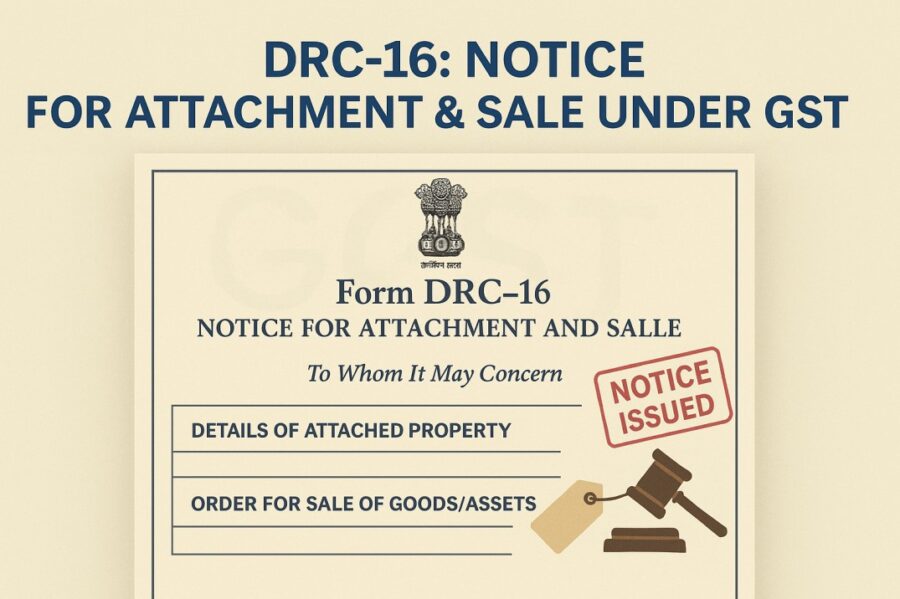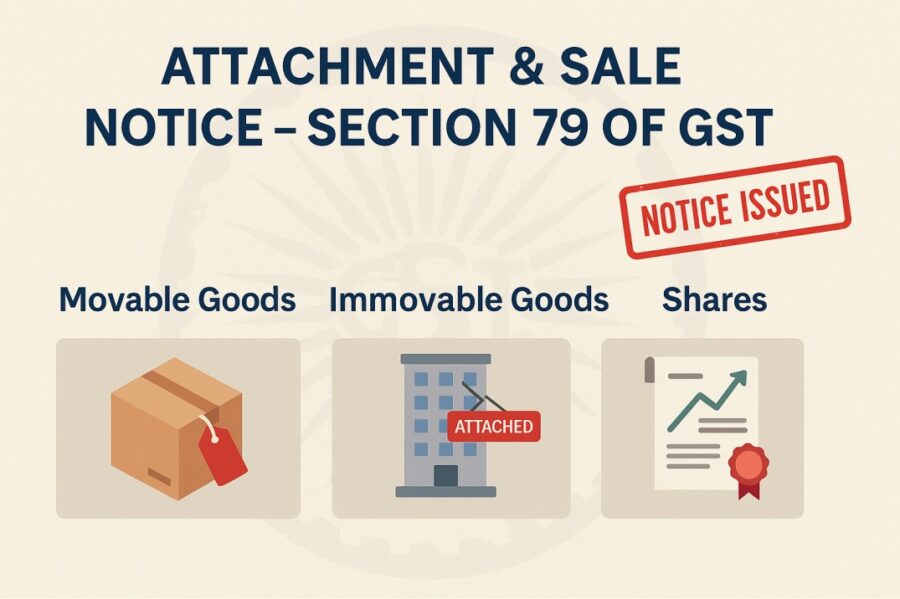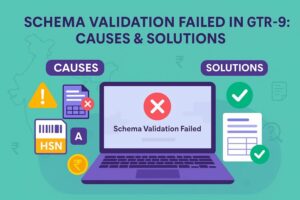FORM DRC 16 in GST: Notice for Attachment and Sale
- 15 Jul 25
- 6 mins

FORM DRC 16 in GST: Notice for Attachment and Sale
Key Takeaways
- DRC-16 is a formal notice issued under Section 79 for attachment of taxpayer’s assets due to unpaid GST.
- It prevents the taxpayer from selling, transferring, or mortgaging the attached movable, immovable, or share-based assets.
- The notice includes schedules listing detailed descriptions of the attached properties.
- Non-compliance can lead to auction and forced sale of assets to recover tax dues.
- Prompt settlement or legal response to DRC-16 is vital to avoid severe recovery proceedings and asset loss.
Tax compliance is an important matter in the management of any business. In India, the GST system has integrated different indirect taxes. However, there can be cases where the taxpayers, even after notices, do not clear their outstanding GST dues.
In such cases, the GST authorities have the power to recover such arrears. One such measure is the issue of FORM GST DRC-16. This notice indicates the attachment and possible sale of assets owned by a taxpayer to recover unpaid GST.
Notice for Attachment and Sale of Immovable/Movable Goods/Shares under Section 79
FORM GST DRC-16 is an official tax alert. It informs a taxpayer that they have not remitted their GST dues, which may be the basic tax, interest, penalties, or fees. Since these amounts are overdue, the authorities are now proceeding under section 79 of the GST Act.
This action is the process of "attaching" the specific assets of the taxpayer. Attachment implies that the taxpayer is no longer able to sell, transfer or create new claims (such as a loan) on these assets. Any effort to do so after the notice is null and void. The primary objective is to sell these assets in case the dues are not paid so that the money can be used to recover what is owed to the government.
Essentially, DRC-16 in GST is a serious step. The notice will clearly state the total amount due.

Various taxpayers might face a DRC-16. This could be a Monthly Taxpayer filing regular returns like GSTR-3B, or an Input Service Distributor (ISD) under Rule 65. Issues can also arise from an assessment basis subject to scrutiny, for example, under Section 63 (for unregistered persons), or problems with filings like GSTR-5 (for non-residents) or GSTR-5A (for OIDAR providers).
E-Commerce Operators also have specific GST duties. Whether one is a Compulsory taxpayer or a Voluntary taxpayer, failing to pay confirmed dues for supplies by persons having GST registration can lead to such recovery actions. Often, the initial demand might have been raised following scrutiny of returns like the GSTR-3B, which is a summary return filed by taxpayers.
Schedule (Movable)
If the DRC-16 notice lists a "Schedule (Movable)," it details the movable assets attached. These are items that can be moved.
Examples include:
- Vehicles (cars, trucks)
- Machinery
- Office equipment
- Stock or goods
The schedule will identify these assets.
Schedule (Immovable)
If the notice includes a "Schedule (Immovable)," it specifies attached immovable properties – things that cannot be moved.
Examples include:
- Land
- Buildings or flats
The schedule will provide property details like its location or survey number.
Schedule (Shares)
Tax authorities can also attach shares the taxpayer owns in companies. If so, the "Schedule (Shares)" in the DRC-16 will specify:
- Company name
- Number and type of shares
This stops the taxpayer from selling or transferring these shares.
Conclusion
Receiving FORM GST DRC-16 is a critical warning for taxpayers, indicating that the GST authorities are initiating asset attachment under Section 79 to recover unpaid dues. This includes movable assets, immovable property, or even company shares. Ignoring the notice can result in the loss of these assets through official sale proceedings.
Prompt action, either by settling the dues or engaging with authorities, is essential to avoid further legal and financial consequences. Businesses must treat this notice with urgency and seriousness. Knowing the implications of DRC-16 is crucial for maintaining GST compliance and safeguarding business assets from enforced recovery measures.
💡If you want to streamline your invoices and make payments via credit or debit card or UPI, consider using the PICE App. Explore the PICE App today and take your business to new heights.
FAQs
What is Form GST DRC-16 and why is it issued?
What happens once a DRC-16 notice is issued?
What types of assets can be listed in DRC-16?
Movable assets: vehicles, machinery, inventory
Immovable assets: land, buildings, flats
Shares: equity held in companies
Each asset type is listed in a specific schedule—Schedule (Movable), Schedule (Immovable), or Schedule (Shares). This ensures clear documentation of what has been attached.
 By
By 















